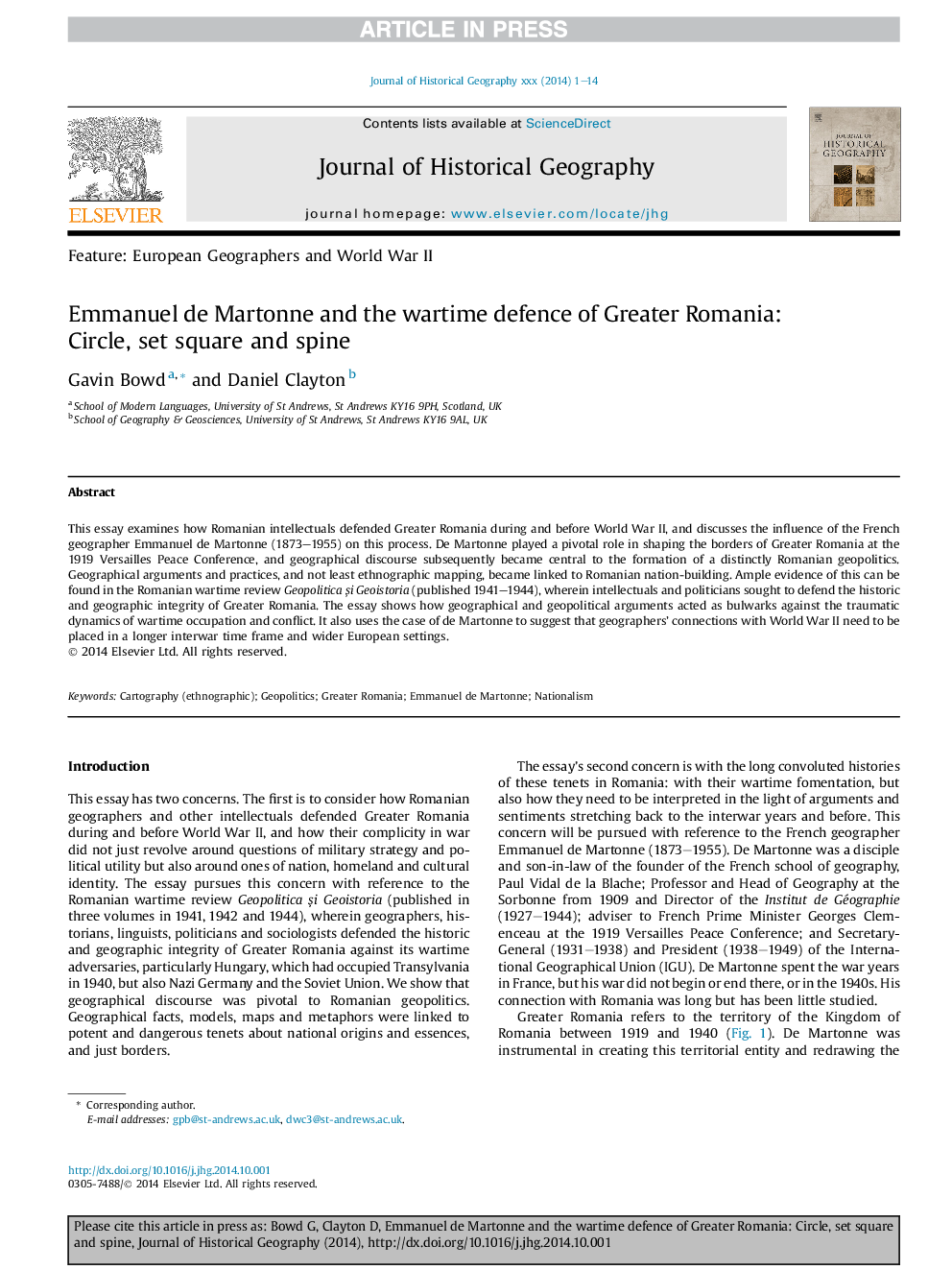| Article ID | Journal | Published Year | Pages | File Type |
|---|---|---|---|---|
| 7447808 | Journal of Historical Geography | 2015 | 14 Pages |
Abstract
This essay examines how Romanian intellectuals defended Greater Romania during and before World War II, and discusses the influence of the French geographer Emmanuel de Martonne (1873-1955) on this process. De Martonne played a pivotal role in shaping the borders of Greater Romania at the 1919 Versailles Peace Conference, and geographical discourse subsequently became central to the formation of a distinctly Romanian geopolitics. Geographical arguments and practices, and not least ethnographic mapping, became linked to Romanian nation-building. Ample evidence of this can be found in the Romanian wartime review Geopolitica Åi Geoistoria (published 1941-1944), wherein intellectuals and politicians sought to defend the historic and geographic integrity of Greater Romania. The essay shows how geographical and geopolitical arguments acted as bulwarks against the traumatic dynamics of wartime occupation and conflict. It also uses the case of de Martonne to suggest that geographers' connections with World War II need to be placed in a longer interwar time frame and wider European settings.
Keywords
Related Topics
Social Sciences and Humanities
Arts and Humanities
History
Authors
Gavin Bowd, Daniel Clayton,
